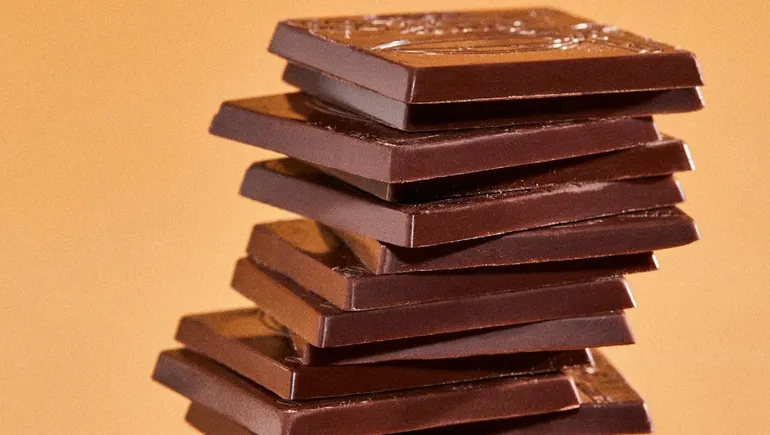Is the future of chocolate cocao-free? Voyage Foods thinks so

Food staples like chocolate have been facing an existential threat.
In unfortunate timing, just ahead of Valentine’s Day, major chocolate producers grappled with the high costs of cocoa and consumers felt the impact. In fact, cocoa prices were at a 46-year-high, roughly 65% higher than they were at this time last year.
Voyage Foods, a food innovation company based in the San Francisco Bay area believes it has an alternative to traditional chocolate, with a plant-based cocoa-free chocolate product.
The company is using proprietary technology and upcycled seeds and fruits to create a sustainable chocolate product marketed recently released a life cycle assessment which showed the ways that its cocoa-free chocolate product is more sustainable than conventional chocolate. Its processes use 99% less blue water consumption, 84% less greenhouse gas emissions and fewer land usage — cocoa-bean chocolate production has been a major cause of deforestation.
“The chocolate industry is centered in a very thin band around the equator, which makes it pretty susceptible to change due to climate change because it is so sensitive to changes in the environment,’ said Kelsey Tenney, vice president of research and development and founding team member at Voyage in an interview with Food Dive. “Cocoa is a very popular flavor, and it only continues to increase in demand, and with that comes an increase in supply which is making a difference in how much cacao costs to the consumer.”
Voyage Foods noticed this challenge and is aiming to tackle it by creating an alternative that performs very similarly to cocoa, but is decoupled from the environmental strains of conventional cocoa.
“When people think about foods that have the highest greenhouse gas emissions and highest water footprint, they tend to think of animal products,” said Voyage Foods CEO Adam Maxwell in an interview with Food Dive, “but per kilometer, coffee and chocolate are also one of the worst emitters of greenhouse gasses of any food product.”
The tech of Voyage Foods
The seed of the idea for Voyage, no pun intended, was the fact that a cocoa seed fundamentally tastes nothing like what consumers actually know and love as chocolate, said Maxwell.
“The molecules in a cocoa seed don’t only exist in cocoa seeds, so we thought, can we take other inputs, put them through similar processes and get the same output?”
Maxwell said the company’s process starts with mapping what the molecular profiles are from the first stage to the final stage of chocolate manufacturing, and mimicking that in a lower-cost, environmentally friendly way. The final piece of its process is what the company calls “flavor compounding,” molecule by molecule to get an entire piece of cocoa-free chocolate.
Voyage’s recipe starts with a vegetable oil blend which has cane sugar, grape seeds, sunflower protein flour, natural flavors, sunflower lecithin — a type of emulsifier — and salt.
Benchmarked against the chocolate industry
Voyage Foods defines itself as a cocoa-free chocolate provider, and therefore is competing against large companies like Barry Callebout over smaller startup companies in different parts of the word looking to do something similar to them, according to Maxwell.
Besides its chocolate, Voyage Foods also makes a hazelnut free spread, which uses similar technology and is designed to be a plant-based, cocoa-free, allergen-free Nutella type product, said Tenney and recently launched in Walmarts across the country.
In terms of the taste of its chocolate, Voyage has done both internal and larger external sensory testing to compare its product to other B2B chocolates that its consumers would be purchasing and it tested the same in terms of taste to those products, according to Tenney.
“To us, that means that consumers like our product just as much as conventional chocolate and we are meeting expectations for what a chocolate tastes like,” she said.
Next steps
In terms of what the cocoa-less chocolate provider has on its plate, Maxwell said they are focusing on building a portfolio of products.
“When you think about chocolate, it isn’t just one product, the coating of an ice cream is different from the chocolate in a cookie. So the goal is to have Chips Ahoy, for example, be able to buy chocolate chips from us but also for an ice cream company to buy a chocolate shell,” he said.
Just last year, the company had essentially zero retail footprint, said Maxwell, and now it is in schools serving 200,000 plus students as well as 1,200 Walmart stores.
“Continuing to grow is a big priority for us this year, while also extending business partnerships and ingredient sales.
Source: fooddive.com

